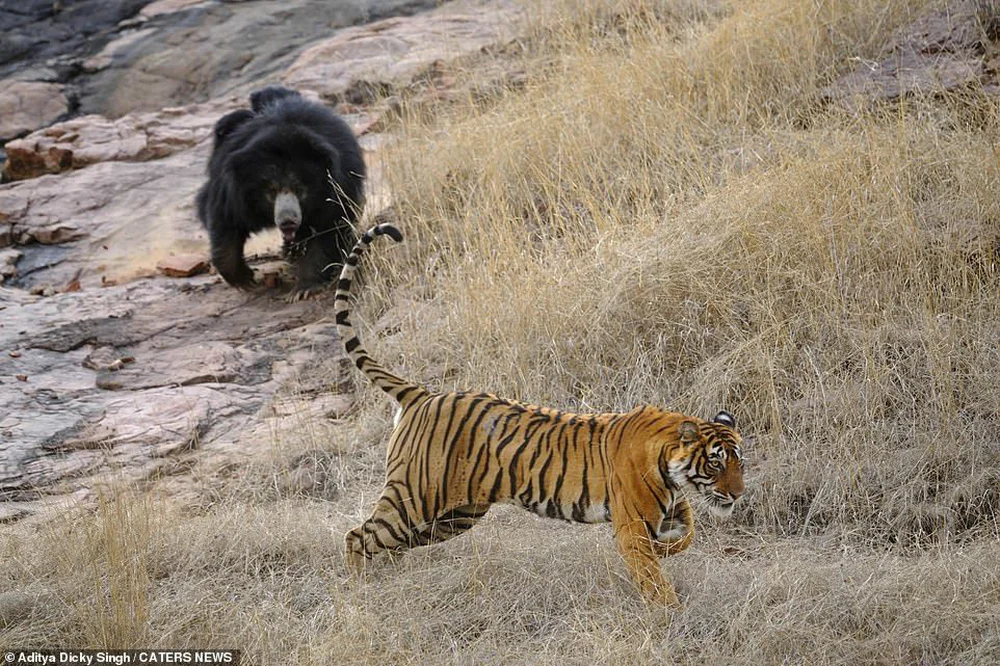Bengal Tiger Fails Miserably against Mother Bear’s Efforts to Protect Cubs

A wildlife photographer was lucky enough to capture a spectacular moment in nature when a mother bear carried her two cubs on her back and confronted a large female Bengal tiger in India’s Ranthambore National Park.
The mother bear, enraged and courageous, stood her ground against the much larger female tiger, determined to protect the lives of her family.
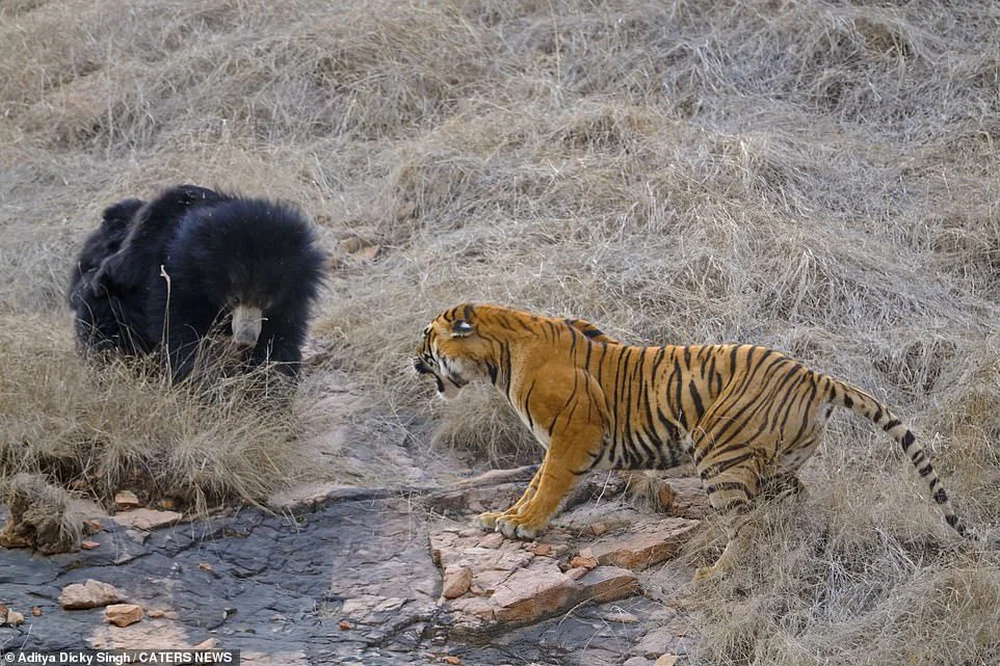
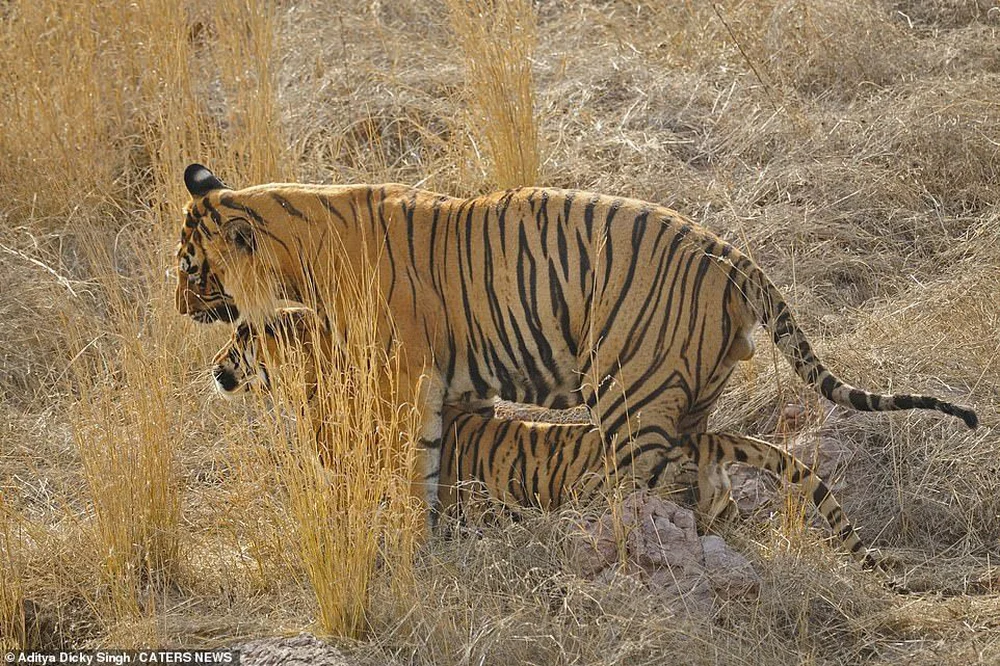
The bear blocked the tiger’s path, growling aggressively as the adversaries drew closer. Her fur stood on end in a threatening display. The two bear cubs clung tightly to their mother’s back, ensuring their safety. The mother bear charged at the startled tiger, roaring and slashing her razor-sharp claws at the tiger and her mate. Both eventually found an escape route and retreated.
Photographer Aditya Dicky Singh shared that in the span of about two minutes, the smaller-sized mother bear managed to instill fear in both Bengal tigers, causing them to flee and safeguard her cubs. Singh said, “A mother bear with her two cubs on her back approached the mating tigers. The female tiger then turned to confront the bear. The bear seemed to be in serious trouble, and we hoped it would run away quickly, but the mother bear had a different plan.”
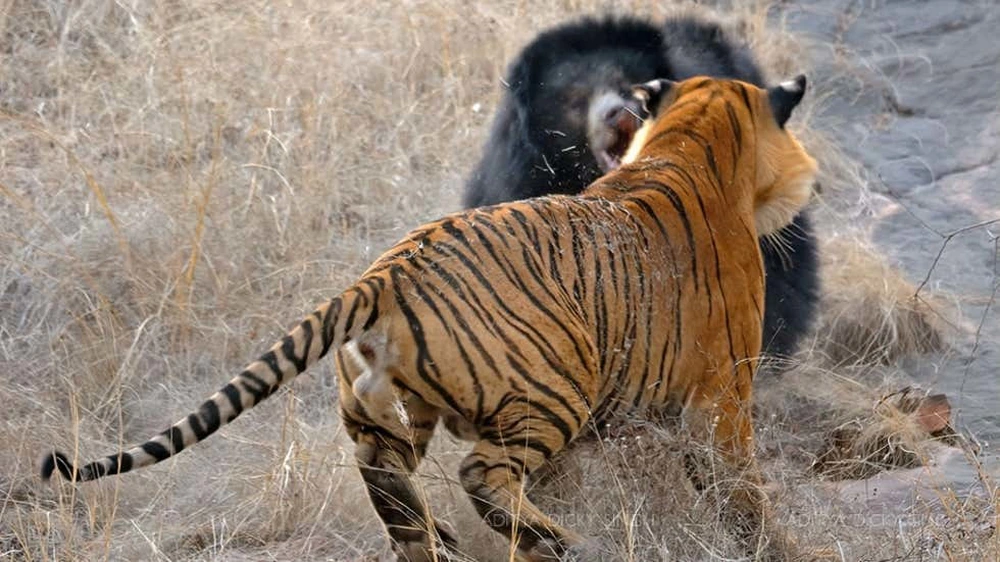
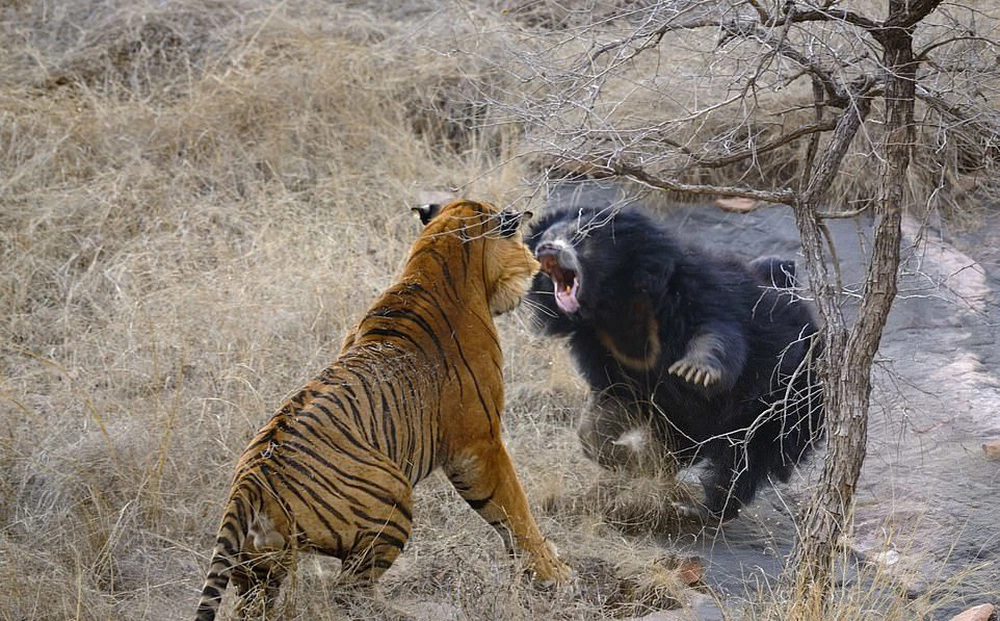
On the other hand, the Bengal tiger is one of the largest wild cats in the world, originating from India. Currently, the Bengal tiger population in the wild is estimated to be between 2,500 and 3,300 individuals.
